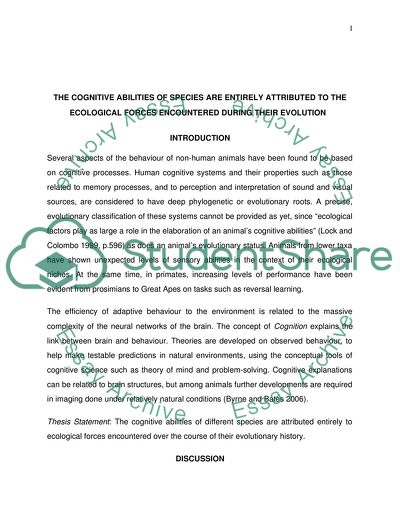Cite this document
(The Cognitive Abilities of Species Case Study Example | Topics and Well Written Essays - 2000 words, n.d.)
The Cognitive Abilities of Species Case Study Example | Topics and Well Written Essays - 2000 words. Retrieved from https://studentshare.org/biology/1729996-the-cognitive-abilities-of-a-given-species-can-be-attributed-entirely-to-ecological-forces-it-encountered-over-the-course-of-its-evolutionary-historydiscuss
The Cognitive Abilities of Species Case Study Example | Topics and Well Written Essays - 2000 words. Retrieved from https://studentshare.org/biology/1729996-the-cognitive-abilities-of-a-given-species-can-be-attributed-entirely-to-ecological-forces-it-encountered-over-the-course-of-its-evolutionary-historydiscuss
(The Cognitive Abilities of Species Case Study Example | Topics and Well Written Essays - 2000 Words)
The Cognitive Abilities of Species Case Study Example | Topics and Well Written Essays - 2000 Words. https://studentshare.org/biology/1729996-the-cognitive-abilities-of-a-given-species-can-be-attributed-entirely-to-ecological-forces-it-encountered-over-the-course-of-its-evolutionary-historydiscuss.
The Cognitive Abilities of Species Case Study Example | Topics and Well Written Essays - 2000 Words. https://studentshare.org/biology/1729996-the-cognitive-abilities-of-a-given-species-can-be-attributed-entirely-to-ecological-forces-it-encountered-over-the-course-of-its-evolutionary-historydiscuss.
“The Cognitive Abilities of Species Case Study Example | Topics and Well Written Essays - 2000 Words”. https://studentshare.org/biology/1729996-the-cognitive-abilities-of-a-given-species-can-be-attributed-entirely-to-ecological-forces-it-encountered-over-the-course-of-its-evolutionary-historydiscuss.


